If we want to generate income from home, then dropshipping is the answer! However, if we want to start dropshipping, we need a comprehensive dropshipping business plan. As dropshipping allows us to sell products without holding inventory, it is a low-risk business model that anyone can start.
However, even though dropshipping is an easy way to make money from home, this business model requires a business structure and proper organization.
Therefore, in this article, we will cover how to create a dropshipping business plan step-by-step. Moreover, we will also explore how to scale our profits with a successful dropshipping business.
What Is A Dropshipping Business Plan?

Essentially, a dropshipping business plan is a written document that includes information about your product, marketing strategies, and finances of the business. This document functions as an action plan to help us achieve our dropshipping business’s key objectives and goals.
Writing an effective business plan is the first step to establishing a dropshipping business. With a business plan, we will have concrete steps to follow that lead to the success of our business.
Why Do I Need A Dropshipping Business Plan?

A dropshipping business plan helps to have a clear idea of what our goals are before we start. This way, we can prepare for any issues or prevent costly mistakes. Furthermore, there are several reasons why we need a business plan when dropshipping:
- To set achievable objectives and milestones
- To help in decision making
- To prepare and organize our business venture
- To create a growth strategy
- To control finances
- To minimize our risks
Since every business needs an objective or an end goal, a dropshipping business plan helps to define what our dropshipping business is seeking to achieve. This gives us a clear idea of what to work on and how to achieve that goal. Consequently, this helps us make the best decisions to achieve business success.
Additionally, a dropshipping business plan allows us to plan and organize our operations. As such, we get a chance to prepare our course of action beforehand, resulting in efficient operations.
Like every other business, the dropshipping business can be scaled further to increase our profit margins. Thus, dropshipping business plans enable us to define a road map to scale our business in the future.
While the dropshipping model doesn’t require a significant investment, it requires some finances to get the business up and running. So, we’ll need to analyze the amount of capital we need and how we will utilize the budget. This will help us control our finances and minimize the risks of loss.
What Needs To Be Included In A Dropshipping Business Plan?
Now that we know a dropshipping business plan is vital for the success of our business, let’s look at its composition. So, here is what a dropshipping business plan consists of:
- Business Identity
- Problem & Solution
- Customer Demographics
- Market Competition
- Selling & Marketing Channels
- Revenue & Expenses
Below, we’ll learn what they are.
Business Identity
Before we start our dropshipping business, we need to have an accurate vision of our business’s identity. Every successful business has its own identity, distinguishing it from the vast competition.
To elaborate, unique business names and logos separate our business from competitors. However, an effective business identity is more than building brand awareness through a catchy name, logo, and website theme.
In fact, our business identity is defined by different factors, such as how we market products, deal with our customers, and more. With that in mind, staying true to our business identity will benefit us in the long term.
Problem & Solution
Next, we need to mention what problems are prevalent in the market and what solutions we offer to overcome them. For instance, problems can include an unfulfilled demand, poor customer service, and more.
In such cases, our focus should be on offering unique solutions like in-demand and trending products for our customers. Therefore, we can use the AutoDS product research tool to find such products to benefit from. In general, when we determine a gap in the market, we can create a plan to fill it and achieve financial success.
Customer Demographics
When selling products, we need to identify our target audience to market and sell our products. As such, we should mention customer demographics in our dropshipping business plan.
In essence, the more defined our customer demographics are, the more in-depth understanding we have of our customers. This means there is less risk of our products not selling well.
With that in mind, here are some key demographics we should include:
- Age Group
- Gender
- Interests
- Income Range
For instance, if we are interested in dropshipping beauty products, then we should focus on marketing our products to females. Additionally, we should also target the age group 15-50 and those who have an interest in beauty products.
Market Competition
One of the best ways to beat our dropshipping competition is by adequately researching them. Thus, we should curate a list of top competitors and identify their strengths and weaknesses. This way, we can adopt their successful strategies and learn from their weaknesses.
When we monitor and learn from several top competitors, we can find out what they are doing right and what they are doing wrong. For instance, we may notice a competitor’s website using a specific app that increases their conversion rate. On the other hand, we can also offer features that the top competitors lack. Ultimately, this allows us to gain a competitive advantage.
Selling & Marketing Channels
After we analyze our competition, we should mention which selling channels we plan on using and the reasons for choosing them. For instance, we can use Shopify and Wix if we want a customizable eCommerce website with custom domains. On the other hand, if we want to take advantage of the vast user base, we can use selling channels like eBay and Facebook Marketplace.
Similarly, we will also list our marketing strategies to promote our products. In general, marketing efforts can skyrocket our dropshipping store’s sales, and there are various marketing methods according to the selling channels we use. But don’t worry, we’ll discuss this in detail later on.
Revenue & Expenses
When dropshipping, our business will generate revenue and incur expenses. Therefore, a dropshipping business plan should mention how our business will generate revenue.
In the same way, we should also write down our expenses. For instance, we can incur subscription fees, shipping, and marketing expenses. Having a clear understanding of the incomings and outgoings will help us determine if our dropshipping business is profitable.
7 Steps To Create A Dropshipping Business Plan
So, how do we create a dropshipping business plan? We can create a dropshipping business plan by following these seven simple steps:
- Executive Summary
- Mission & Overview
- Market Analysis
- Product Offerings
- Marketing Plan
- Operations & Processes
- Financial Plan
Let’s understand each of these steps in detail.
1. Executive Summary
Beginning with the first step, we need to formulate an executive summary. To clarify, an executive summary is a brief overview of our entire dropshipping business plan.
It states the company’s business type while summarizing the necessary information and growth-supporting strategies. In general, an executive summary should include a brief introduction to our business concept, products, target audience, financial information, and our action plan to run the business.
2. Mission & Overview
Next, we need to set our mission & overview. To elaborate, the mission & overview is a short statement of our dropshipping businesses’ core purpose and objectives. It includes a concise description of what our business does and its key goals.
Here, we can also include our business structure, background, and previous experiences. Overall, this section should highlight our businesses’ strengths and future potential.
3. Market Analysis
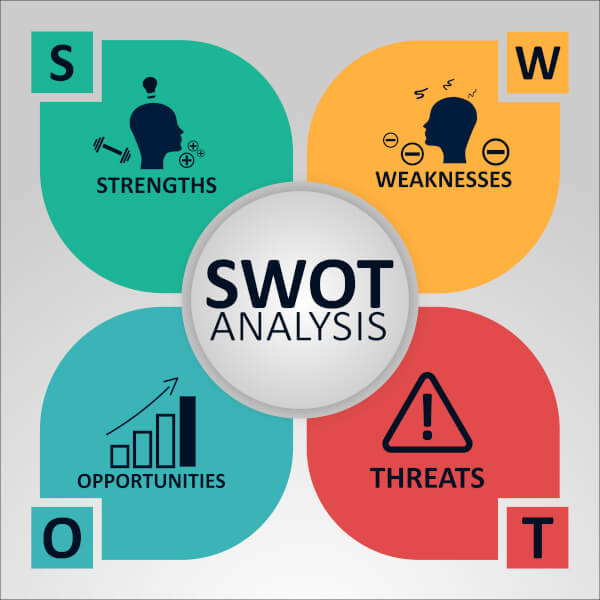
When running a business, different factors affect our business negatively and positively. So, we need to analyze the market and consider these factors.
Generally, most businesses perform a SWOT analysis to understand the market. To elaborate, SWOT stands for strengths, weaknesses, opportunities, and threats. In simpler words, we need to define these four factors in our business plan.
For instance, our strengths are a positive feature of our business within our control, like knowledge, background, existing customers, or patents. On the other hand, our weaknesses include negative factors that put us at a competitive disadvantage, such as limited resources, geographical barriers, or insufficient expertise.
Moving on to the opportunities, they are external positive factors that are not in our control but help our business. They can include a rise in product demand or multiple suppliers’ availability. Finally, threats are external negative factors that can slow the growth of our business, such as shifts in government regulations, price fluctuations on the supplier’s side, or an unfavorable trend.
Once we prepare a SWOT analysis, we can focus our strategies around our strengths and opportunities, work on our weaknesses, and avoid threats.
4. Product Offerings

After performing a market analysis, we need to mention what kind of products we will be offering in our stores. Since the main idea of our dropshipping business is to sell products, we need to clarify the type of products we will provide to our customers.
If we do not know what kind of products to sell, the AutoDS product research tool will come in handy as a tremendous product-finding method. To clarify, the AutoDS product research tool allows us to find trending and in-demand products from US suppliers. With this tool, we can spot winning products using various search filters like category, review, price, rating, and more.
Besides product research tools, many other methods can help us find products for our store. Some of them are:
- Google Trends
- Spying on the Competition
- Search Supplier’s best seller sections
- AutoDS Blog & YouTube playlist
Google Trends
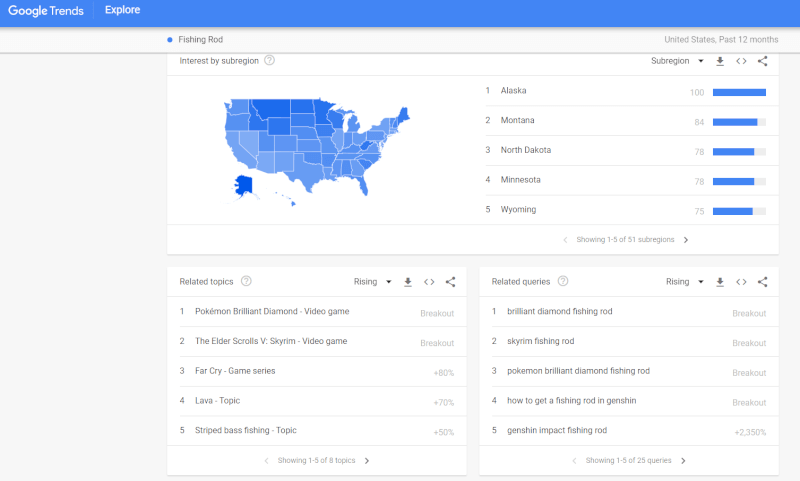
First, we have Google Trends, a research tool that displays trending search queries. With the help of trending search keywords, we can determine which products are in-demand. After we spot products with high search volumes, we can find the same products on different suppliers’ websites.
Spying On The Competition

Next, we can spy on our competition to find products to sell. Moreover, spying on our competitors helps us find out what products are selling well in their stores. And one such spying tool to spy on Shopify stores is the Koala Inspector. With the Koala Inspector, we can gain insight into what works best for our competitors and find successful products for our store.
Additionally, we can also discover the total number of products in their store and the average price. Plus, we can also learn about their marketing strategy since many Shopify stores use marketing to promote their products.
Besides that, we can filter products by price, category, and sold if we want to find product information from eBay. By filtering products with “sold,” we are searching for products that have already been sold on eBay by another seller. Hence, we can find winning products for our dropshipping stores by keeping an eye on our competitors.
Search Supplier’s Best Seller Sections

When searching for products, supplier websites are one of the best places to explore. To determine what products to sell, we can always go to the supplier’s website to see what products are trending in the market and make good sales online. For example, Amazon has Amazon Best Sellers, where best-selling products from every category are updated every hour.
On the other hand, AliExpress has the AliExpress Dropship Center, which enables us to find trending products. Plus, the Dropship Center includes various search filters, which allow us to filter out products and find winning items for our stores.
AutoDS Blog & YouTube Playlist

Besides being a product research tool, AutoDS also has plenty of resources that offer us different in-demand product ideas. For example, AutoDS has a blog page to assist dropshippers in finding suitable products to sell in their stores.
Furthermore, AutoDS’ “Sell These Now” YouTube playlist is updated with trending products every month. With these resources, we have an endless supply of best-sellers from different categories to sell in our stores.
Once we have a list of in-demand products to sell, we should maximize our profit potential by choosing the best products from our research list. Therefore, we can use the product research spreadsheet to help narrow our products, ensuring we only list high-potential products.
5. Marketing Plan
Once our store has products to sell, we must determine which marketing methods we will use to promote our products. That’s because marketing helps us gain more customers by enabling our stores to remain visible in front of customers. In a nutshell, marketing is vital to the success of our dropshipping business.
In general, there are various marketing strategies according to the selling channels we are using. Let’s look at the best marketing strategies to promote our products on eBay, Facebook Marketplace, and Shopify & Wix.
eBay Marketing
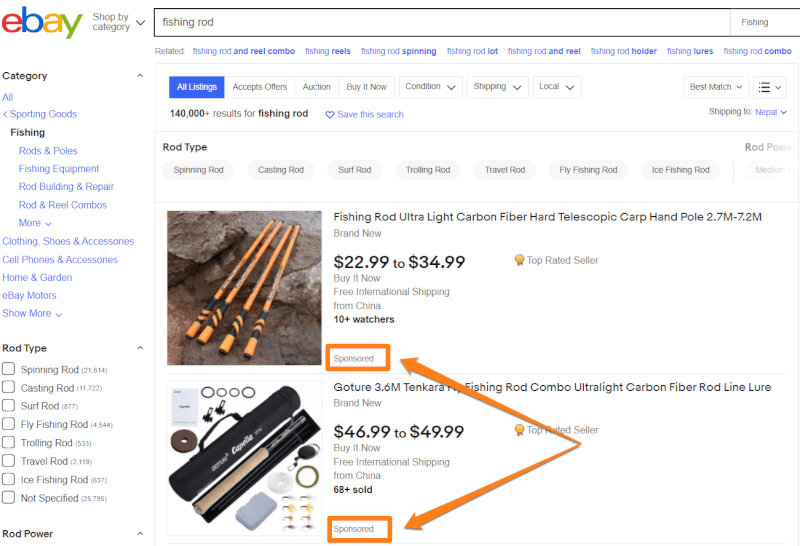
On eBay, we can promote our products with promoted listings. To clarify, promoted listings are one of the leading marketing methods for our products listed on eBay. It enhances the visibility of our products in front of the massive number of eBay users.
Furthermore, promoted listings allow us to be prominently featured on eBay search results. With that in mind, here are the two types of promoted listings:
- Promoted Listings Standard
- Promoted Listings Advanced
To elaborate, Promoted Listings Standard is a marketing tool for our products that allows us to gain more visibility across eBay. To use this method, we have to pay a small fee to eBay after our products are sold.
In contrast, Promoted Listings Advanced (eBay-PPC) is another marketing tool that enables dropshippers to run ad campaigns on the eBay platform. In simpler words, Advanced Promoted Listings enables us to target specific keywords that customers are searching for. As a result, our products rank at the top of the eBay search results page. As for its cost, we pay a certain fee to eBay every time a customer clicks on our ad.
Facebook Marketplace Marketing
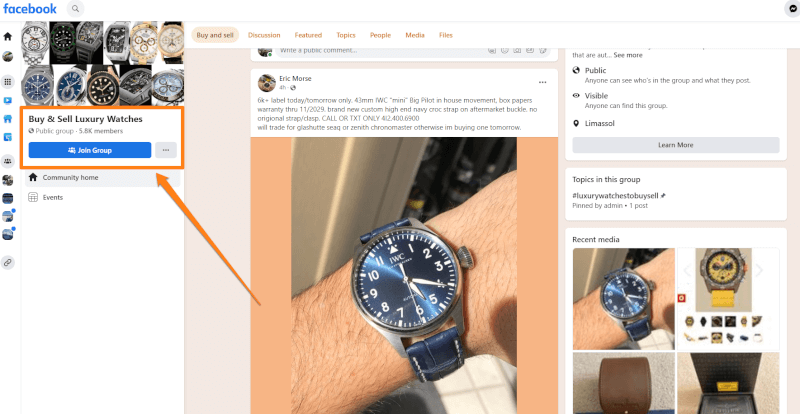
Moving on to Facebook Marketplace, we can market our products in two different ways:
- Boosted Listings
- Buy & Sell Groups
As Facebook Marketplace is an eCommerce marketplace, boosted listings functions much like eBay promoted listings standard. In simpler words, this tool helps sellers promote their products in front of Facebook Marketplace buyers.
Aside from that, we can also utilize different buying and selling groups on the Facebook platform. To elaborate, the buy and sell Facebook groups connect buyers and sellers of specific products or categories.
When listing our products on the buy and sell groups, we can optimize the product titles and descriptions with Search Engine Optimized keywords. This helps our products rank higher whenever a customer searches for related products.
Shopify/Wix Marketing
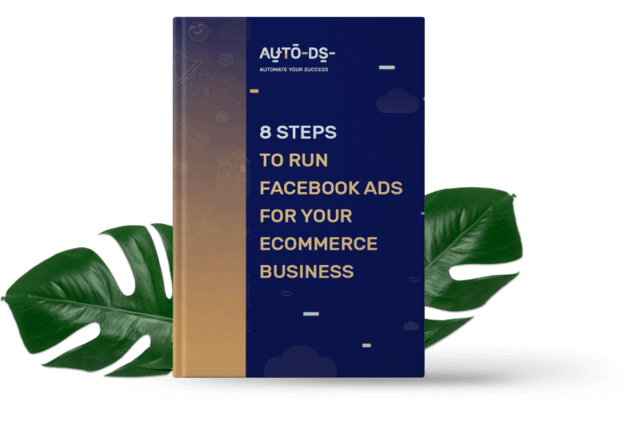
Finally, we have Shopify & Wix, two of the popular selling channels that enable us to customize our stores. Here are some ways to promote our products on Shopify & Wix:
- PPC ads
- Influencer marketing
- Email marketing
- Blog
As Shopify and Wix are fully customizable platforms, we can enjoy more flexibility in marketing our products. For instance, we can use Pay Per Click (PPC ads) on platforms such as Google, Facebook, Youtube, and more. In short, Pay Per Click is a marketing method that drives traffic to our store. In return, we only pay for the ad when users click on it.
Additionally, we can also utilize influencer marketing to market our products. Essentially, influencers are individuals with a massive following on social media platforms. Therefore, we can pay the influencers to review and promote our products on their social media page. This persuades the followers to buy the products and increases our dropshipping store’s sales.
Besides influencer marketing, email marketing is another marketing technique for dropshippers. An effective email campaign generates sales while helping us build a loyal customer base. One way to collect customers’ email addresses is by providing promotional discounts in exchange for customers’ email addresses.
Finally, we can also use blogs for marketing our store. To elaborate, we can include relevant keywords related to products in our Search Engine Optimized (SEO) blogs. When customers search for those words, the search engine ranks our website better and helps us remain visible. Therefore, blogs help us generate organic traffic on our dropshipping websites and are a great marketing tool.
6. Operations & Processes

As dropshippers, we need to handle our dropshipping operations and processes efficiently. Typically, our dropshipping operations include finding, buying, selling, and fulfilling orders.
With that said, we can source products from AutoDS-supported suppliers and benefit from automated order fulfillment. All we have to do is to import and sell products to customers as the middleman.
But how will we know that a supplier is reliable? To determine whether a supplier is credible or not, we should analyze the following factors:
- Product range
- Positive reviews
- Quality of products
- International warehouses
- Excellent customer service
- Clear business policies
When selling products, the more options we provide to our customers, the more likely they are to buy from us. So, we should look for suppliers with a massive product variety.
Plus, we should work with suppliers with positive reviews and feedback. To clarify, customer reviews and feedback give valuable insight into the suppliers. Therefore, high ratings and reviews translate into a trustworthy supplier.
On top of that, when dropshipping, we should search for suppliers with warehouses in major regions such as the US, UK, Europe, and Australia. In general, suppliers with international warehouses have quick shipping times, which increases customers’ trust and loyalty. Furthermore, we can also optimize global audience targeting.
Besides that, one of the crucial steps in verifying a supplier is to look at the support they provide. As a supplier’s customer support is what we extend to our customers, we need to look for top-level customer support to ensure our business operates efficiently.
Furthermore, we need a supplier that has clear business policies. As dropshippers, we extend the same services to our customers that our suppliers offer us. Therefore, we should ensure that our supplier provides clear business policies such as fast shipping and an easy return policy.
7. Financial Plan

And last but not least, we need to prepare a financial plan to control our finances. Generally, businesses include financial statements like income statements, balance sheets, and cash-flow statements. Like any other business venture, preparing financial statements helps determine if our dropshipping business is viable.
Furthermore, although dropshipping businesses operate online, we still have to abide by eCommerce regulations and fulfill our tax obligations. With that in mind, we can either prepare these financial statements ourselves or hire an accountant to help us.
Overall, fulfilling these steps will make our dropshipping business very effective. Also, we can start and run our dropshipping money-making business.
How To Scale Your Dropshipping Business & Multiply Profits
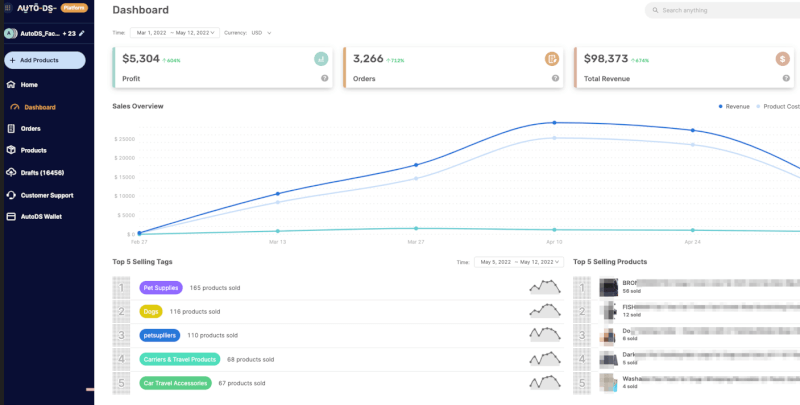
Great, once our business plan is ready, we’re well on our way to setting up our dropshipping business. But with business automation, we can take our business to greater heights and earn even more money.
In general, we can perform dropshipping operations in two different ways: manual and automatic. To clarify, the manual method of dropshipping requires a lot of time and effort. For instance, if we are importing products, we have to import products one at a time and manually fill in product details such as images, variations, colors, and more.
On the other hand, business automation saves us time and manual labor. Furthermore, the automatic method utilizes business automation software to help us avoid time-consuming manual processes. As such, we can automatically import single or bulk products in seconds with all the necessary information!
And one of the best scaling tools in the market is the AutoDS dropshipping platform, an all-in-one solution for dropshippers. While we saw some benefits above, here are more excellent tools we can take advantage of:
- Price/Stock Monitoring
- Automatic Price Optimization
- Complete Order Fulfillment
- Automatic Tracking Updates
- One-screen Inventory Management
- Multiple Integrations (Wix, Shopify, FBMP, eBay)
- Advanced Image Editor
- And so much more!
All in all, with these features, the AutoDS automation software enables us to scale our dropshipping business. Moreover, we can achieve complete freedom along with higher profits with dropshipping automation.
Frequently Asked Questions
Is Dropshipping Profitable?
Absolutely! As dropshipping doesn’t require us to buy inventory in advance, dropshipping is a low-risk and high-reward business model.
Can I Start Dropshipping On My Own?
Of course! We can quickly start dropshipping on our own. All we need is excellent products to sell, reliable suppliers to source products, and a suitable selling channel to sell on.
Do You Need A Business Plan For Dropshipping?
Yes. Like every other business, we need a business plan for dropshipping. If we prepare an excellent business plan, we have a higher chance of achieving dropshipping success.
How Do I Write A Dropshipping Business Plan?
We can start writing a dropshipping business plan by creating an executive summary, mission & overview, market analysis, and product offerings. Moreover, we also need a concrete plan for marketing, operations & processes, and a financial plan.
Conclusion
Great! Now, we know how to create a dropshipping business plan. Additionally, with the step-by-step guide, we have a roadmap to start a dropshipping business today.
After we start, we can start earning from dropshipping business within seven days. With dropshipping automation tools, we can keep multiplying our profits while making our tasks more efficient.
All in all, dropshipping is a highly profitable eCommerce model. But success only comes with consistent learning and improvement. With that in mind, here are three articles to help us expand our dropshipping knowledge:






 post content
post content
 post content
post content



















